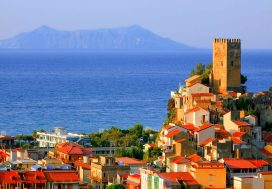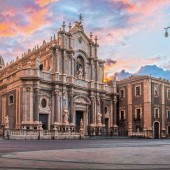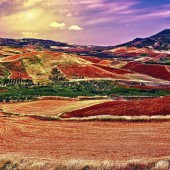The Province of Messina
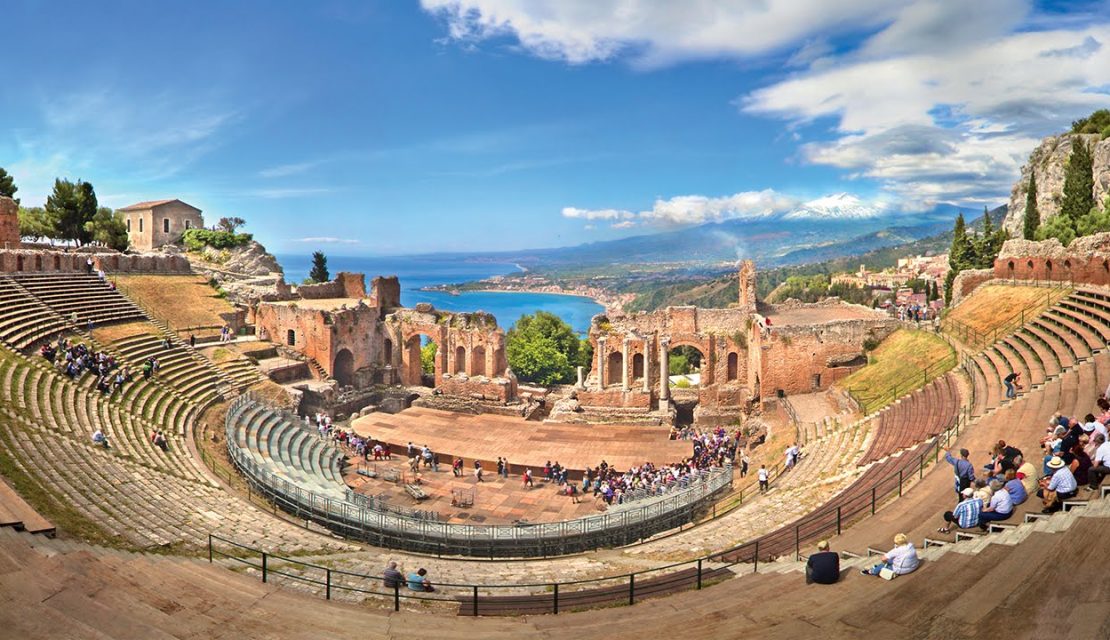
“Sigh no more, ladies, sigh no more,
Men were deceivers ever,
One foot in sea and one on shore,
To one thing constant never.”
In perhaps his most light-hearted comedy, Much Ado About Nothing, William Shakespeare wrote this classic phrase that probably still rings true for many Sicilian women. But there is another connection between the play and Province of Messina: The city of Messina acts as the backdrop for the play. One could almost say it has a leading role in it. During Shakespeare’s lifetime the kingdom of Aragon (located in today’s Spain) ruled Sicily, and as most of the other conquerors who came to Sicily, they made sure to line their pockets on the backs of the poor population. They managed to do so by keeping the island in an absolute feudal rule under their crown. Shakespeare portrays the vanity and foolishness amongst this influential aristocracy using his sharpest satirical pen.
Messina, on the other hand, is portrayed with warmth and admiration as a safe haven from the horrors war. The play starts with a messenger delivering the word that Prince Don Pedro is coming to the city after proving himself successful on the battlefield. And so starts the romantic entanglements, seasoned with an ironic portrayal of the incompetent nobility and their yea-saying underlings.
Montalbano Elicona, a medieval village in the province of Messina
Messina was founded by Greek colonizers in the 8th century BC. The city was called Zankle then, meaning scythe, for the protective shape of its natural harbor. It later changed names when refugees from Messenia settled there at around 490 BC.
As with other Sicilian cities, Messina has been courted and conquered by a long list of empires and peoples. When the rulers interchanged, it often came at the price of burning the city down to the ground. As if the deeds of man weren’t enough, Messina has also had its fair share of natural catastrophes, the largest of which occurred on the 28th of December 1908. It began with a tremendous earthquake, followed by a 12-meter high tsunami. Many of the buildings of Messina did not follow it into the new year. Not even the spectacular cathedral fully made it but had to have parts of it restored. The skill of the Sicilian bricklayers is evident in the fact that many of us mere laymen can’t tell what parts of it are new, and what parts remain from the original structure from 1197 AD. The campanile (bell tower) is 60 meters tall and sports the world’s largest astronomical clock. Something quite unique happens here at noon every day for about 12 minutes. This, however, is better left experienced than described.
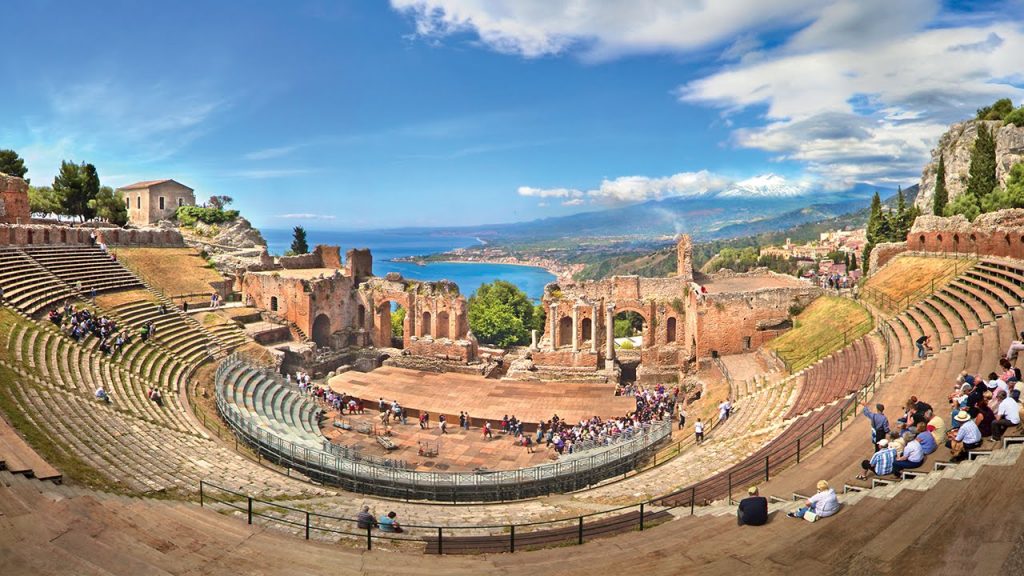
You will also find the fashionable town of Taormina further south in the province, which attracts more visitors than anywhere else in Sicily today. Taormina has a long history of tourism, stretching as far back as the 18th century. Back then it was known to be a gentlemen’s resort, meaning a place with an open mind towards homosexuality and thus attracting a lot of gay, male tourists. This picturesque, sophisticated and beautiful town is quite famous and well documented, so we will only focus on the fantastic Greek amphitheater in the city in this text. It was reconstructed during the late Roman era for plays as well as gladiator matches. Gladiator matches were a big part of Sicilian martial arts practice, so you will find these old arenas throughout Sicily. There are mostly music concerts in the theater today.
In close proximity to Taormina is the coastal town of Giardino Naxos, which also has a well-developed infrastructure for tourism. When here, make sure to try the local specialty risotto con finocchio (fennel risotto) at the restaurant Da Pippo Lupo Di Mare.
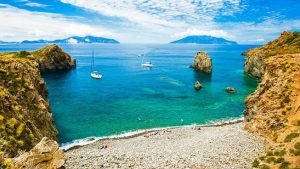 The Province of Messina also includes the Aeolian Islands: Lipari, Salina, Stromboli, Vulcano, Filicudi, and Alicudi. On a clear day (which Sicily has a lot of), at least three of the distinct volcanic islands are visible all the way from Termini Imerese in the west. For centuries they were poor islands housing a hardened population who lived off of what the sea provided. Today, they are trendy paradise islands. Perhaps the change began when Swedish actress Ingrid Bergman played the female lead in Stromboli, the movie named after the island on which it took place. They are unique and magnificent in a way that no one can withstand being blown away by.
The Province of Messina also includes the Aeolian Islands: Lipari, Salina, Stromboli, Vulcano, Filicudi, and Alicudi. On a clear day (which Sicily has a lot of), at least three of the distinct volcanic islands are visible all the way from Termini Imerese in the west. For centuries they were poor islands housing a hardened population who lived off of what the sea provided. Today, they are trendy paradise islands. Perhaps the change began when Swedish actress Ingrid Bergman played the female lead in Stromboli, the movie named after the island on which it took place. They are unique and magnificent in a way that no one can withstand being blown away by.
In Messina, much like the other coastal regions of Sicily, fish should be your first choice on the menu. Swordfish straight out of the Strait of Messina prepared in a thousand different ways served with both rice and oven baked spaghetti. Another local specialty is caponata di melanzane con parmeggiano served with deep-fried potatoes. For dessert, the small chocolate or lemon covered pastries known as pignolate are a must!

